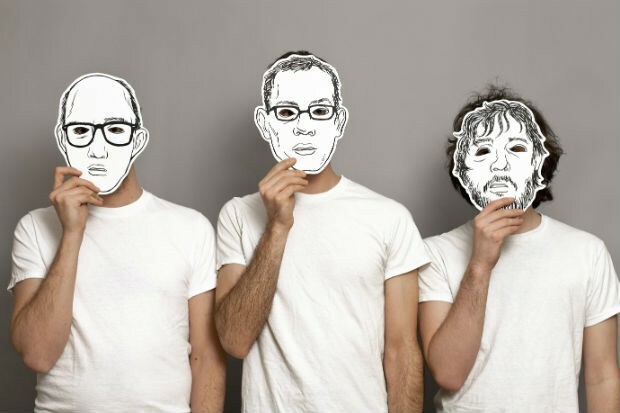Capgras syndrome: symptoms, causes and treatment
exist disorders which, due to their nature or their rarity, are very little known to ordinary people. One of them is the Capgras syndrome, which we will define and study today.
What is Capgras Syndrome
The person suffering from Capgras syndrome suffers a delusional ideation, based on how your loved ones have been replaced by double impostors posing as them. It is not exactly that you have difficulties when it comes to recognizing faces, as it happens in the prosopagnosia, since patients with Capgras Syndrome recognize the facial features that technically define people and therefore have no problems when it comes to visualizing faces. However, they interpret the presence of certain people in a delusional way, believing that they are imposters in perfect disguise.

Frequent symptoms
From one day to the next, Capgras Syndrome patients report that some of their loved ones (usually the partner, a close relative, or even co-workers) have been replaced by identical doubles who behave in the same way, although they present certain aspects different.
At this moment, the emotional bond that existed between them is broken and the afraid, rejection and avoidance. They are not able to know why, for what and who has replaced their loved one, but although this idea does not make sense, they assume that it is true, and they will interpret all kinds of facts and actions as signs that they are surrounded by impostors.
In short, patients can recognize the faces of others but not connect them with emotional meaning that they have, so that they feel that there is a person with the same face and features as another and at the same time they do not know how to point out a concrete and coherent reason why that individual is not who they say they are.
History of this rare syndrome
In 1923, the psychiatrist Jean Marie Joseph Capgras described this syndrome for the first time under the name of “double illusion” or “l’illusion des sosies”: the patient was a 50-year-old woman who suffered from delusions. On the one hand, he thought that he belonged to royalty and, on the other, that people around him had been replaced by doubles, since there was a secret society that was in charge of kidnapping people and the appearance of their double.
The disorder arose as a result of not surviving the death of her son, a few months old, and that is when she began to claim that he had been kidnapped and replaced. After this, she returns to give birth to two sets of twins, and of them only one girl survived. After this, his idea of the existence of the network in charge of kidnapping and substitution became stronger, coming to believe that she herself had a double on the outside while she remained entered.
Causes of Capgras Syndrome
The exact causes of this syndrome are not known, but the most accepted theory is the disconnection between the visual recognition system and the limbic system, in charge of emotional processing.
The visual system processes stimuli through two differentiated pathways: on the one hand, the ventral pathway connects the visual cortex with structures in charge. recognition of objects and, on the other hand, the dorsal pathway connects the visual cortex with limbic structures, which provide emotional and affective meaning. Therefore, it could be stated that there is a disconnection in the dorsal tract, since the patient recognizes the relative visually, but does not associate any emotion with him.
Comorbidity with other disorders
This syndrome is linked to other psychotic disorders, such as paranoid schizophrenia, psychotic depression or other delusional disorders. It can also appear along with other diseases, whether they are brain tumors, head injuries and dementias, such as Alzheimer's or Parkinson's, since neurological alterations of this type rarely affect only a very limited type of brain function.
Treatment
Because Capgras Syndrome is rare, there are not many studies on validated and effective treatments. The most used and useful treatment in the medium term is composed of the combination of psychotropic drugs and the cognitive behavioral therapy.
1. Psychopharmaceuticals
As for psychotropic drugs, the following types can be used:
- Antipsychotics, which are used to combat the delusional idea present in the individual.
- Anticonvulsants, which are used as support if necessary.
- Other drugs according to the pathology that presents.
2. Psychological therapy
If we focus on psychological therapy, we will mainly use the cognitive restructuring. Through this technique, the patient will confront the delusional and incoherent idea of her, making her see that it is the emotional perception of her that has changed, and that the others have not been replaced. In addition, you will be taught to undertake strategies to compensate for these recognition failures in other ways, and to deal with the anxiety these mistakes can cause.
It would also be convenient to carry out an intervention with the family, due to the emotional cost that the disease represents both in the patient and in the relatives.
Capgras Syndrome has caused family relationships to deteriorate, producing a distance between members, and this distancing is not convenient if we want the family to cooperate in the recovery process. To do this, you have to make sure that they understand the situation and that everything is due to a neurological disorder, and not to the patient's decision-making.
Finally, it must be taken into account if the patient has a primary pathology from which this syndrome has developed. If so, this pathology would prevail when choosing a treatment and applying it.
Bibliographic references:
- Aziz, V.M. and Warner, N.J. (2005). "Capgras' Syndrome of Time". Psychopathology. 38 (1): pp. 49 - 52.
- Bhatia, M.S (1990). "Capgras syndrome in a patient with migraine". British Journal of Psychiatry. 157(6): 917 - 918.
- Ellis, H.D. and Young, A.W. (1990). "Accounting for delusional misidentifications". The British Journal of Psychiatry. 157(2): 239 - 248.
